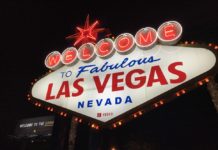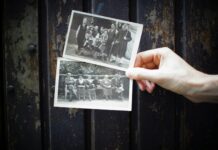2Street Photography: 15 Tips for better Street Photos

1. Ignore all street photography tips
There are a lot of dubious “dos and don’ts” on street photography out there. Like shooting from the hip, cropping, shooting people from the back are not cool. These kind of street photography tips are not really helpful.
There is award winning street photography showing people from from behind (Lensculture Street Photography Awards 2017). Henri Cartier-Bresson’s iconic puddle jump image is heavily cropped.
The hard and fast rules of street photography are:
1. Say something about the human condition. Images of leaves and clouds are acceptable. There does not have to be a human figure in the image.
2. The photograph must be candid. No element in the frame whether human or non-human may be arranged or staged.
3. The post-processing must maintain the integrity of the image. No adding or removing of elements in the image.
Beyond that, it is entirely up to you.
Read all 15 Tips here
3FAIR FACED – Bruce Gilden

Bruce Gilden has shadowed the residents of cities around the world, capturing the dark side of urban dwellers with a flash in hand. His often-confrontational take on street photography is framed within his modern day film noir sensibility. Since the start of his career in 1968, he says, he has been compared to legendary street photographers like Weegee, William Klein and Lisette Model.” These are photographers who created a new space in a genre that has existed since photography’s inception, pioneering styles that were entirely personal and captured an attitude about their time and perception of the world. Fifty years later, Gilden has carved out a place for himself with almost twenty books in this category. Now he’s redefining himself again.
Taking an iconic line from war photographer Robert Capa to heart— “if the picture isn’t good enough, you aren’t close enough”— Gilden has worked for years on getting closer to his own subjects. Some might even describe the work as aggressive. “The face is the environment,” Gilden tells TIME, after returning from recent trips to the Iowa and Wisconsin State Fairs, where he made these portraits.
4Seeing India Through a Contemporary Lens

Near the end of his abruptly abbreviated life, Raghubir Singh complained about a curator who asked him why he didn’t photograph outside India. He observed that no one wonders why Walker Evans or Garry Winograndstayed in the United States.
“He was stung by these American blinders that see America as the world and other places as foreign,” said Mia Fineman, the associate curator of photographs at the Metropolitan Museum of Art, who has organized a Singh retrospective at the Met Breuer through Jan. 2. (It will then travel to the Museum of Fine Arts, Houston, and the Royal Ontario Museum in Toronto.) Because Singh’s photographs depict scenes that Western viewers find exotic, it is easy to overlook their formally inventive compositions and masterful technique — to realize that they are not simply reportage, they are art.
5Photographer Spends Years Documenting His Daily Commute on the New York Subway

Photographer Andre D. Wagner‘s first book, Here for the Ride, is a beautiful compilation of contemporary New York street photography. Turning his mundane 9-to-5 commute into an opportunity, Wagner began documenting his subway rides from Brooklyn to New York. This work evolved into the monograph, which contains 62 images that weave a personal story of life in the city.
From 2013 to 2016, Wagner dutifully carried out his work, continuing a tradition of street photographers who have immortalized the Big Apple. As if nodding at this past, he works with black and white film, a habit he picked up at the beginning of his photography career and never thought to change. “I like the harmony of monochrome, and nothing looks as good as silver gelatin prints,” Wagner shares with us. “All of my heroes—Roy DeCarava, Robert Frank, Garry Winogrand—shot in black and white so it was a natural choice for me.”
6‘Next of Kin’: Portraits in a time of conflict

“Then, recently, my son wrote a school paper on the theme of crisis and conflict photography. He and I discussed at great length whether documentary photographers are ‘vultures or artists,’ and I introduced a third category: ‘tradespeople.’ The industry of documentary photography has evolved significantly since I started in the days of film, and I’ve evolved from a person with a technical skill set to an ‘artist’ with a vision to share. I’m not exactly comfortable with this moniker.
“My takeaway from these ruminations is that all along, I’ve been trying to document humans in conflict and crisis. And in a sense, I’ve been making family portraits — images of our cousins whom we don’t hear from so often.”




































